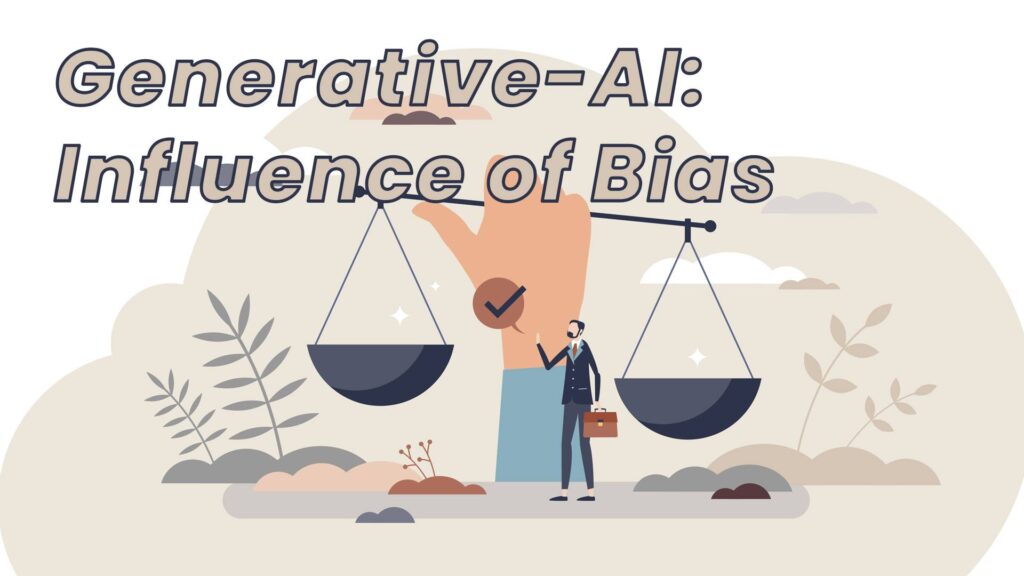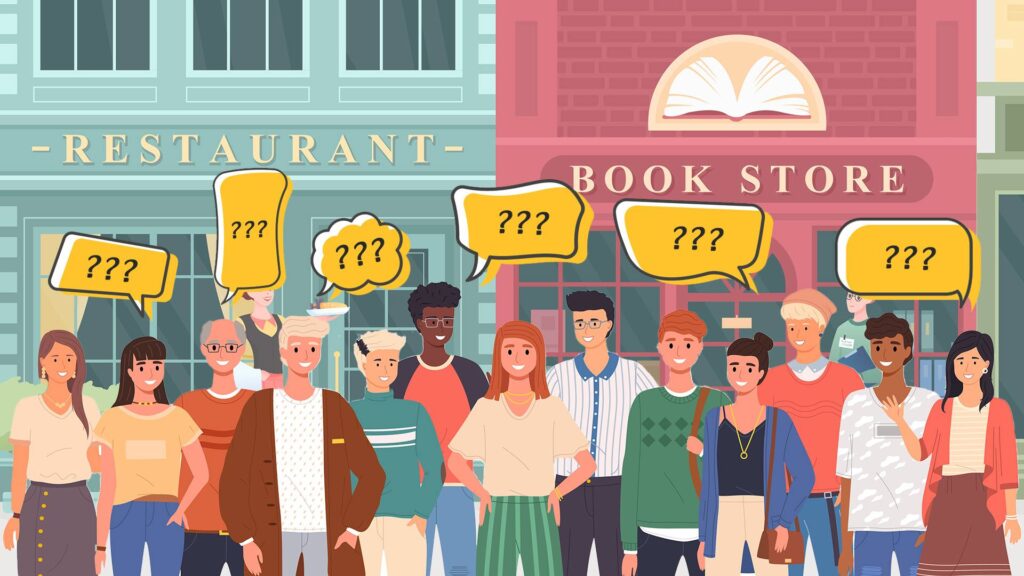When did Google become a verb? I had to look it up. It was 2002, when the American Dialect Society nominated “Google” as word of the year. Just four years after Google became readily available to us all, the word had become synonymous with searching the Internet.
Over twenty years later, we continue to have a love-hate relationship with search engines, often struggling to discover keywords that will solicit the results we are looking for.
For a business and marketer, it can be a minefield. Who is the ideal customer, and how do they think? What language do they use? We ask ourselves, “Am I describing the products and services that I sell in a way that my ideal customer will find them?”.
It’s an important point, one Backlinko highlighted in an article published earlier this year.
Check out the following analysis:
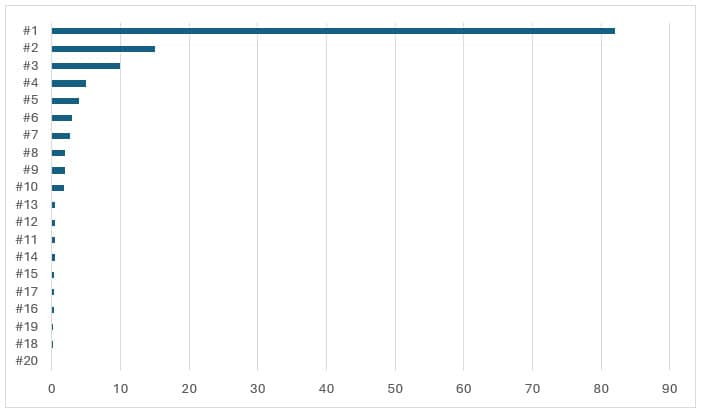
Backlinko discovered that the click-through rate (CTR) for the top-ranking site was magnitude greater than all the others. What’s more, they learned that only 0.63% of individuals searching on Google clicked on a link on the second page.
As time progressed, the traditional search results have been pushed further down the page, and other forms of information have taken a more commanding spot. Video, news, buy, and AI Overviews are just a few items taking up real estate. Last week, I reported that when Google presented AI Overviews on mobile devices, the overview consumed 75% of the screen. Google estimates that between 62 and 64% of all website traffic is on mobile devices; it’s not a statistic worth ignoring.
I mentioned that Google announced that over one billion people had used an AI Overview. This is an incredible number, given that AI Overviews are only in use across a handful of countries right now.
Needless to say, the competition to be at the top is fierce.
Traditional SEO techniques include (but not limited to):
- Content quality (E-EAT)
- Backlinks
- Site speed and optimization
- Technical SEO (structured data schema, site structure, site maps)
- Keywords
Offer the ingredients to build a search engine-dominating strategy.
However, Generative-AI, the AI technology used by AI Overviews, isn’t a search engine. It processes an Internet Searcher’s request in a very different way. Check out our article on how Generative-AI works, here.
In the article, I presented the context: the name given to the input passed to the AI or, in the case of a user’s web search, their keywords.
The context can and does profoundly impact the AI’s response, making it highly susceptible to a searcher’s bias.
Unlike SEO, which, to be fair, isn’t completely immune, how a search is phrased will have a tremendous impact on the result.
Just How Influential is a Person’s Bias on an AI Overview?
So, I ran a small experiment using the web-enabled version of ChatGPT 4o. By web-enabled, I mean that it would use search results garnered from the Internet to answer my question.
I kept everything simple. My prompt was a single sentence (see below) that I used to search with Google. I am based in the UK, so your results may vary if you try the test yourself.
Best trainers for walking
Google Results (For brevity, I have only included the first five results)
- 7 Best Walking Shoes
https://runrepeat.com/uk/guides/best-walking-shoes
Brands mentioned: Nike, Allbirds, Hoka, Sketchers
- The best walking shoes for women of 2024, tested by editors
https://www.womenshealthmag.com/uk/gym-wear/g63093599/best-walking-shoes/
Brands mentioned: DMX, Bondi
- Walking – Shoes
https://www.adidas.co.uk/walking-shoes
Brands mentioned: Adidas
- The best walking boots for runners UK 2025
https://www.runnersworld.com/uk/gear/shoes/g44137487/best-walking-boots/
Brands mentioned: Lowa, Merrell
- The 10 Best Walking Shoes of 2025 | Tested & Rated
https://www.outdoorgearlab.com/topics/shoes-and-boots/best-walking-shoes
Brands mentioned: Hoka, Brooks, On Cloud, Nike
I then ran the same query using ChatGPT twice: first, with just the prompt and second, asking it to identify its sources.
It is worth keeping in mind that Generative AI doesn’t sort results, assert a preference, or make a recommendation. The prioritization of one brand over another is incidental. Given the context and the AI’s understanding of language, the output represents what the AI felt was the most likely sequence of words/tokens to respond.
The first time around, it responded by categorizing the mentions by scenario: Overall, All-Day, Lightweight, Arch Support, Flat Feet, and Budget.
Brands and products were called out in the following order:
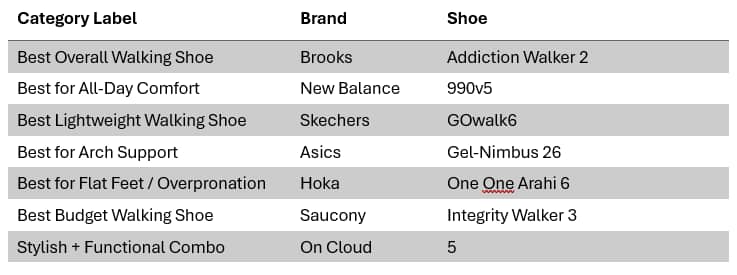
I then re-ran the query, asking ChatGPT to identify its sources.
It repeated the categorization labelling the results as Best overall, Best for all-day, and so on.

While the results are similar, there are notable differences. Why? The context changed. Adding “provide the sources for each recommendation” to the initial prompt was enough to change how the AI Model determined the next best word/token.
If we take this a step further, by using the American word for trainer, sneaker, instead.
Best sneakers for walking
ChatGPT categorized the product mentions, such as “Best overall,” “long walks,” “running,” and so on. However, it recommended one to three types of sneaker per category rather than just a single option with the original prompt. In addition, it changed the categories too.
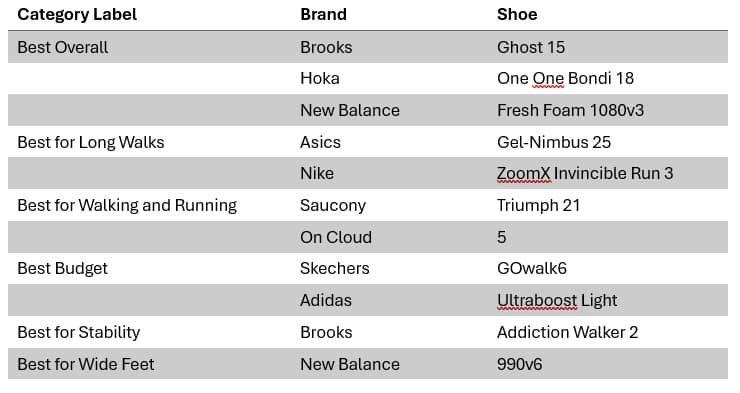
The takeaway is that as you embark on your own Generative Engine Optimization (GEO) journey, consider that even the smallest innocuous change to a prompt can have a subtle yet profound influence on the results, and that just because a site is ranking well in the traditional search engine results, this does not mean that the AI will prioritize them as a source for it’s own analysis.

